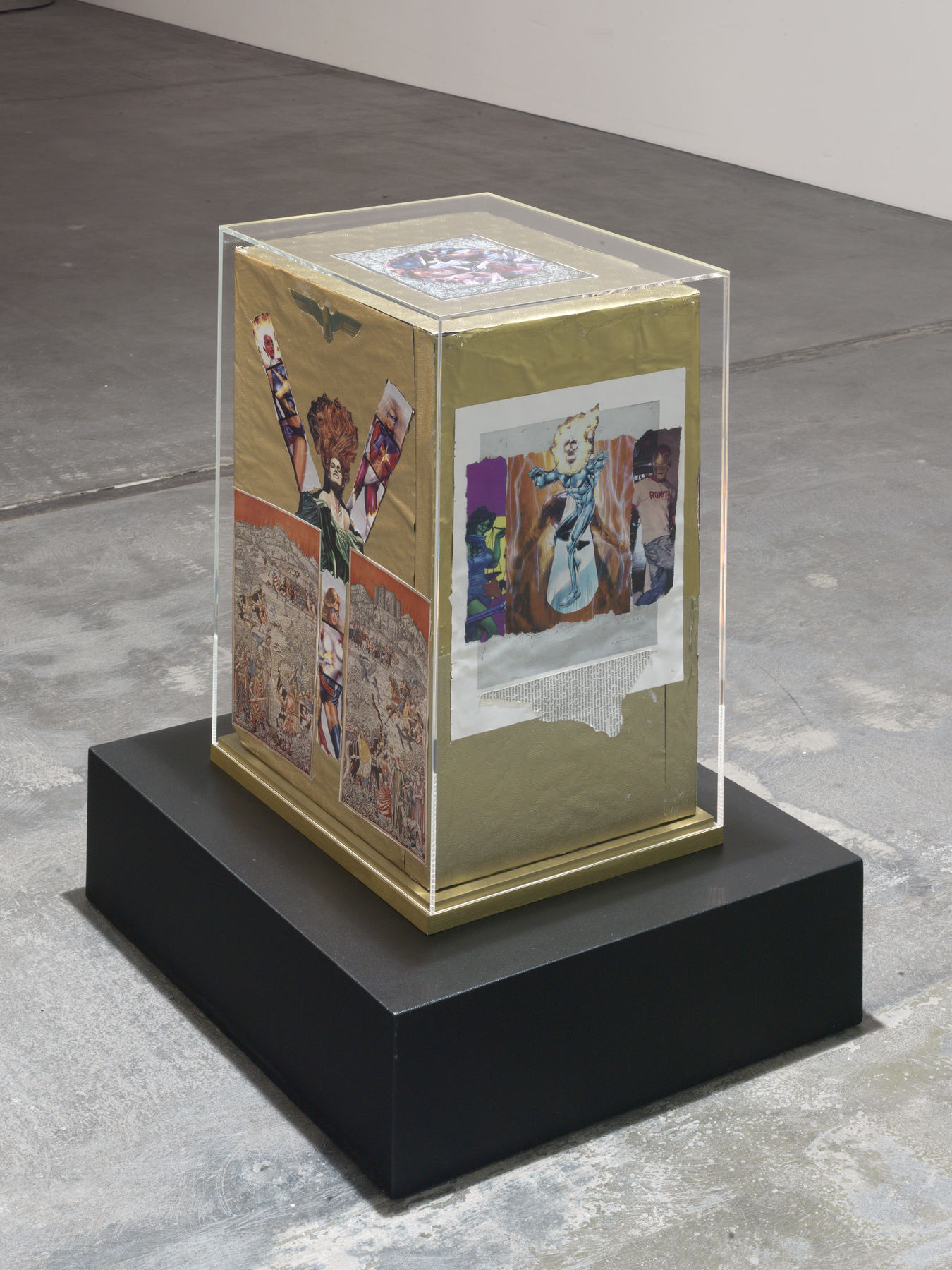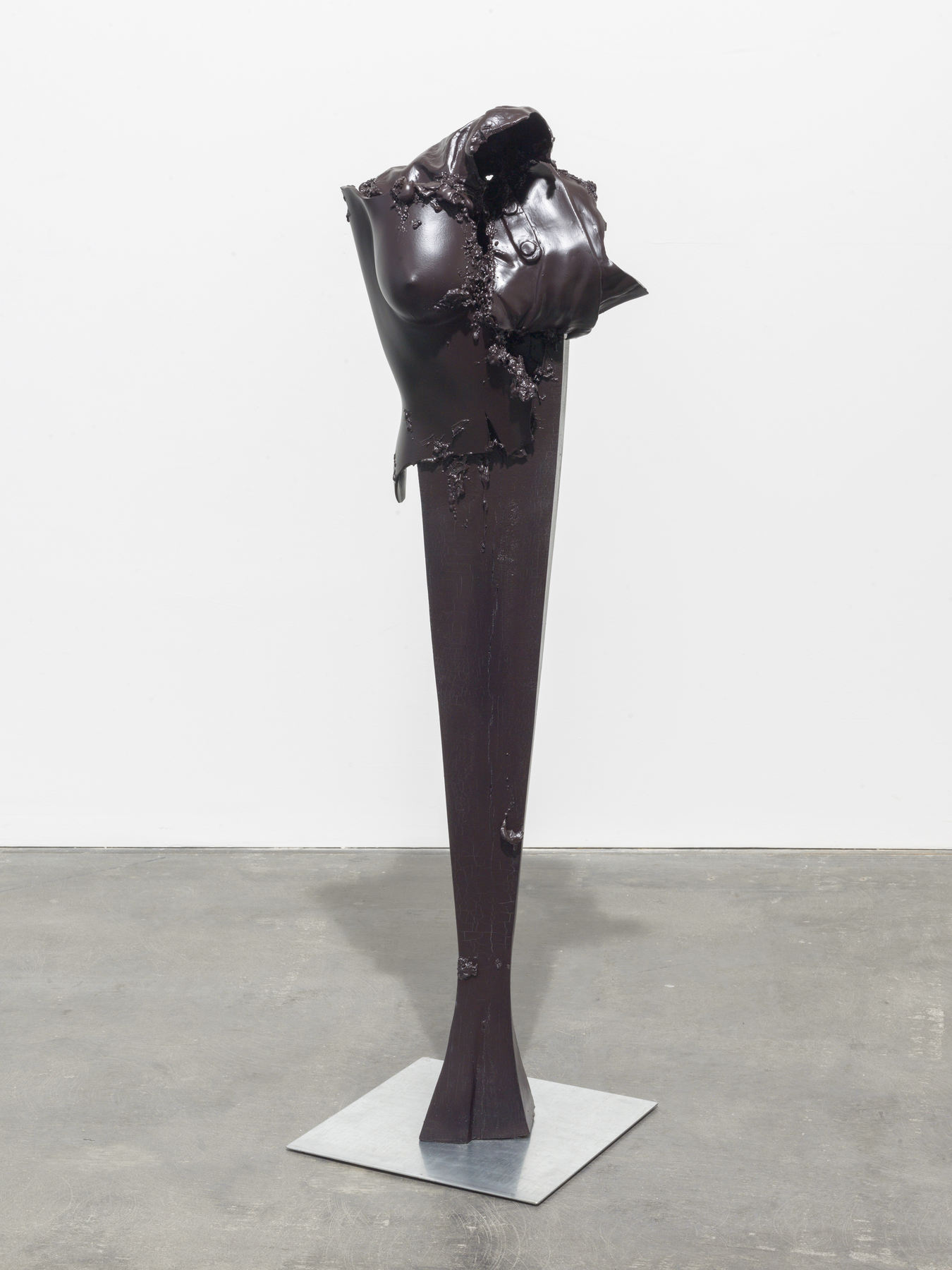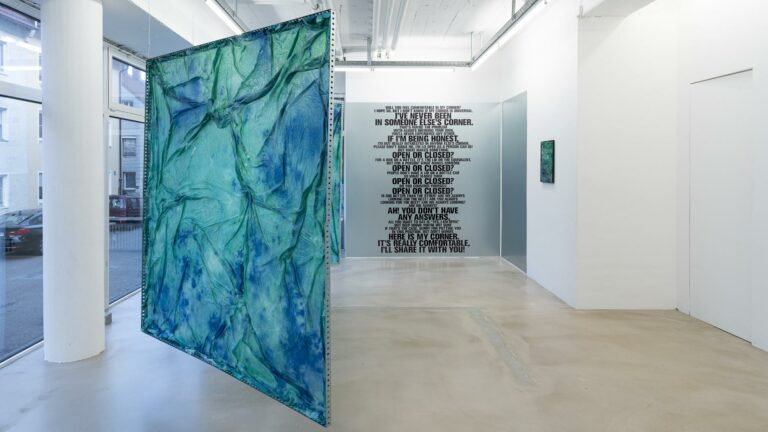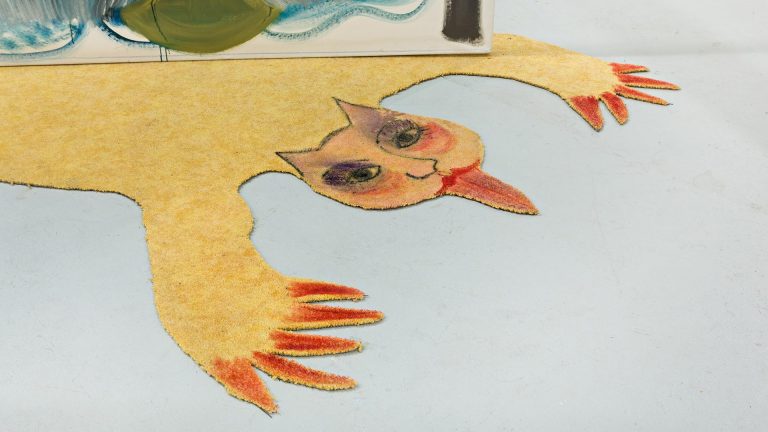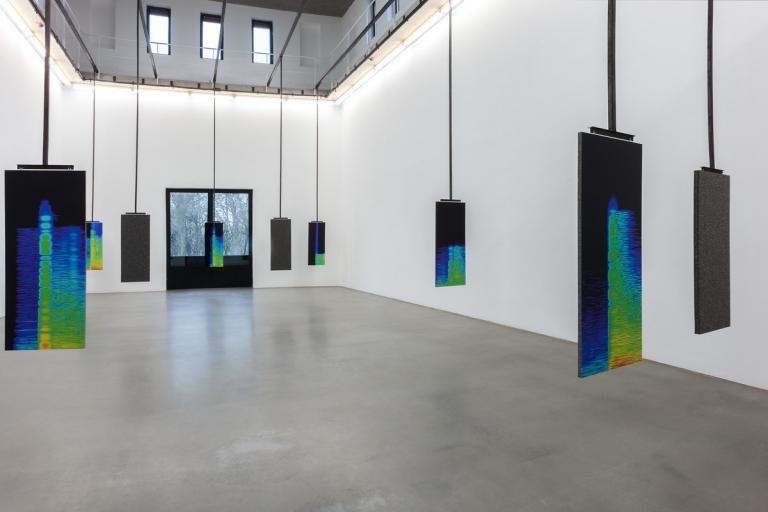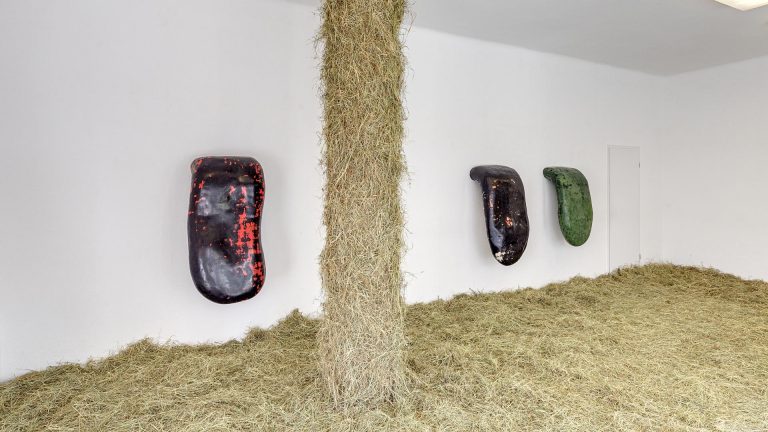Artists: Björn Dahlem, Thomas Helbig, Andy Hope 1930, Erik van Lieshout, Philipp Modersohn, Aïda Ruilova, Yves Scherer, Markus Selg, Thomas Zipp
Exhibition title: Manifestations
Venue: Galerie Guido W. Baudach, Berlin, Germany
Date: November 17 – December 22, 2018
Photography: Roman März, all images copyright and courtesy of the artist and Galerie Guido W. Baudach, Berlin
Galerie Guido W. Baudach is pleased to present the group show Manifestations. On the basis of selected works by different artists of the gallery the show demonstrates complex aspects of contemporary sculpture which are put up for discussion.
Sculptures are – first of all – three-dimensional objects made by human hands with ideational intention. Corresponding artifacts from the Neolithic period are the oldest known artworks. Through all periods, sculpture represents one of the most central artistic disciplines. In the early 20th Century sculpture was expanded by a completely new branch: the Readymade, which is not shaped or made by the artist himself but is introduced into the context of art as a found object. Since then, artists use found objects, so-called objets trouvés, naturally as sculpting material.
This, for example, is the case in the work of the painter and sculptor Thomas Helbig. His assemblage called Quattrocento from 2011 builds a bridge to the European Renaissance – an epoch which devoted itself explicitly to the study of the human body. Helbig´s sculpture clearly reveals feminine features. The headless torso of a dummy is glued to a wooden log to form a hybrid figure. Eventually, an all-over painting with deep brown lacquer provides the sculpture with its unifying appearance.
A synthesis of different components also characterizes the contribution of multimedia specialist Markus Selg, who also is a protagonist of digital art. Where Helbig‘s sculpture appears as dark and dystopian, Selg´s Dream Stele (Thutmose IV) encounters the viewer in bright CMYK colors. Specifically, one recognizes elements of the ancient past (the face of the mummy of an Egyptian king) as well as picture patterns of the computer age. The figure and the pedestal show motifs that are either found objects or graphic structures – the latter were created using a fractal algorithm. Subsequently, the interconnected patterns and image quotations were applied on a synthetic substance as thermoplastic prints. In a further step, the artist transferred the material from the second to the third dimension by hand.
The painter, sculptor and installation artist Thomas Zipp also intersperses materials which inspire various connotations. His sculpture Force Table demonstrates elements of basic stereometric forms as well as wooden extremities of dummies. Associations with Russian Constructivism are combined with the puppet metamorphoses of the Surrealists. In addition, through wiring, electricity and light bulbs, the sculpture acquires aspects of a light-giving or a kinetic human machine.
In contrast to the collaged figurations by Zipp, Selg and Helbig, the Swiss artist Yves Scherer presents an almost classical sculptural work. Indeed, Vincent – a pink-lacquered, life-size male nude cast from aluminum – is the 3D realization of a still image from the film Irréversible (2002), showing the actor Vincent Cassel. His appearance, casually emerging from the bath, is a reminiscence of a modern David and refers to the excesses of violence, in which the figure is involved in the film, in its subtext only.
Subliminally disconcerting and disturbing are the videos by US-American artist Aïda Ruilova, in which emotional and psychological states are transported. In her barely minute-long video 7 Things of Mollino from 2006, a hand held into the camera presents obscure objects that are seemingly incoherent in the darkened interior. The work was created in the enchanted villa of the Italian universal talent and eccentric Carlo Mollino (1905-1973) in Turin. The screening of mostly sculptural objects – from castings of antique spolia to curiosities from the Wunderkammer – draws a psychogram of their former owner.
What seems to be more transparent is the Superstruktur (Melancholia) titled work by sculptor Björn Dahlem, a wafting web made out of thin wooden strips standing on the ground, in which among other materials an LED cable is incorporated. The illuminated cosmic web leans or balances on a white polyhedron, a Platonic ideal form, which was already used symbolically in Albrecht Dürer‘s engraving Me-lencolia I. The polyhedron appears as a mysterious building block or as the base of an elusive world design. Placed slightly apart, a glass calyx made of found objects also belongs to the sculpture. Its content, a dark elixir, apparently points towards the black bile – a fluid assigned to melancholy in the context of the ancient conception of the four temperaments. In this mood, the poets of Romanticism saw the basis of all creative activity and of all artistic practice.
Implied future scenarios combined with historical material can also be found on DEAD MAD DEAD (1997-2007) by Andy Hope 1930. A cardboaord box is covered with gold foil, on which the artist has applied collaged compositions of different elements: enigmatic emblems, numbers and slogans, female and male superheroes from comic strips as well as the medieval-looking illustration of a hawk hunt. The shimmering object with its peculiarly low base and auratizing plexiglass hood acts like a shrine, a shrine of trash, to whose closer consi-deration one literally must go down on his knees.
Baubi3, a three-stage, rejuvenating sculpture by Philipp Modersohn bears witness to a completely different materiality. The work is made of sediments such as pebbles and sand but lacks the corresponding ephemeral, fragile appearance. Formally, one might be reminded of an abstract sculpture of the early 20th Century. But this historical perspective should not obscure what this scrolling contemporary work of art is too: a sculpted, mobile pile of sand in the age of the Anthropocene.
In contrast to these nature and landscape references, the sculpture Sony HD by the Dutchman Erik van Lieshout from the year 2009 illus-trates a technical device, a video camera, that however is made of cardboard and self-adhesive-film. In this way, the artist portrays his primary means of work, because the films recorded with his video camera always act as starting points for van Lieshout‘s further elabora-tion of a topic in the form of drawings, paintings and/or installations. In this process, colored self-adhesive-film is used again and again as a creative element. As a result, Lieshout‘s camera sculpture as a three-dimensional image not only reminds of the stylistic history of Modernism i.e. Minimal Art. Furthermore, it touches fundamental subjects with aspects such as likeness and illustration, perspective, image depth and illusionism, which go back far into the history of art.
-Thomas Groetz
Manifestations, 2018, exhibition view, Galerie Guido W. Baudach, Berlin
Manifestations, 2018, exhibition view, Galerie Guido W. Baudach, Berlin
Manifestations, 2018, exhibition view, Galerie Guido W. Baudach, Berlin
Manifestations, 2018, exhibition view, Galerie Guido W. Baudach, Berlin
Manifestations, 2018, exhibition view, Galerie Guido W. Baudach, Berlin
Manifestations, 2018, exhibition view, Galerie Guido W. Baudach, Berlin
Manifestations, 2018, exhibition view, Galerie Guido W. Baudach, Berlin
Thomas Zipp, Force Table, 2018, Mixed media, 198 x 89 x 94 cm
Andy Hope 1930, DEAD MAD DEAD, 1997 – 2007, Card box, gold paper, application, 60.5 x 32 x 41 cm
Aïda Ruilova, 7 Things of Mollino (A), 2006, Video, colour, sound
Markus Selg, Archaic Revival Series: Dream Stele (Thutmose IV) fractal simulation, male, 2018, UV-print on cellulose Polyester and aluminium dibond, 188 x 40 x 40 cm
Philipp Modersohn, Baubi3, 2018, Pebble stones, Asilikos, epoxy resin, steel, sand, Rollen, 162 x 90 x 90 cm
Thomas Helbig, Quattrocento, 2011, Mixed media, 127 x 45 x 45 cm
Björn Dahlem, Superstruktur (Melancholia), 2018, Wood, isolation foam, LED light, glass vase, glass bowl, flask, pool ball, jaegermeister, coke, approx. 220 x 150 x 180 cm
Erik van Lieshout, Sony HD, 2009, Vinyl, card box, wood, 134 x 84 x 84 cm
Manifestations, 2018, exhibition view, Galerie Guido W. Baudach, Berlin










